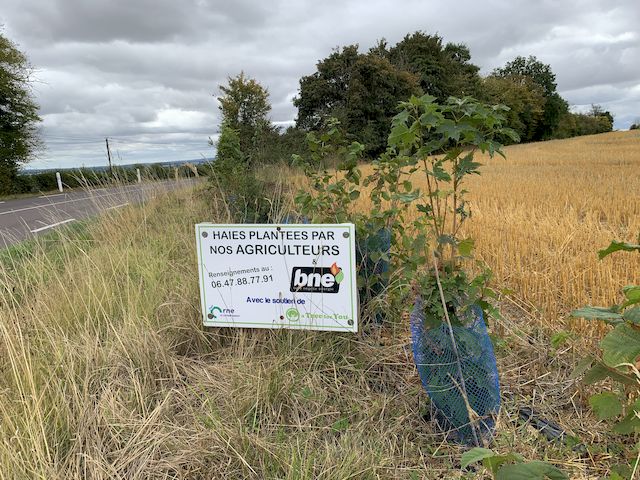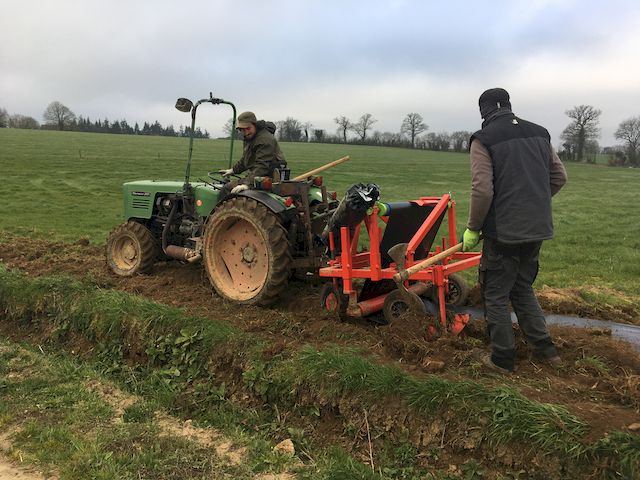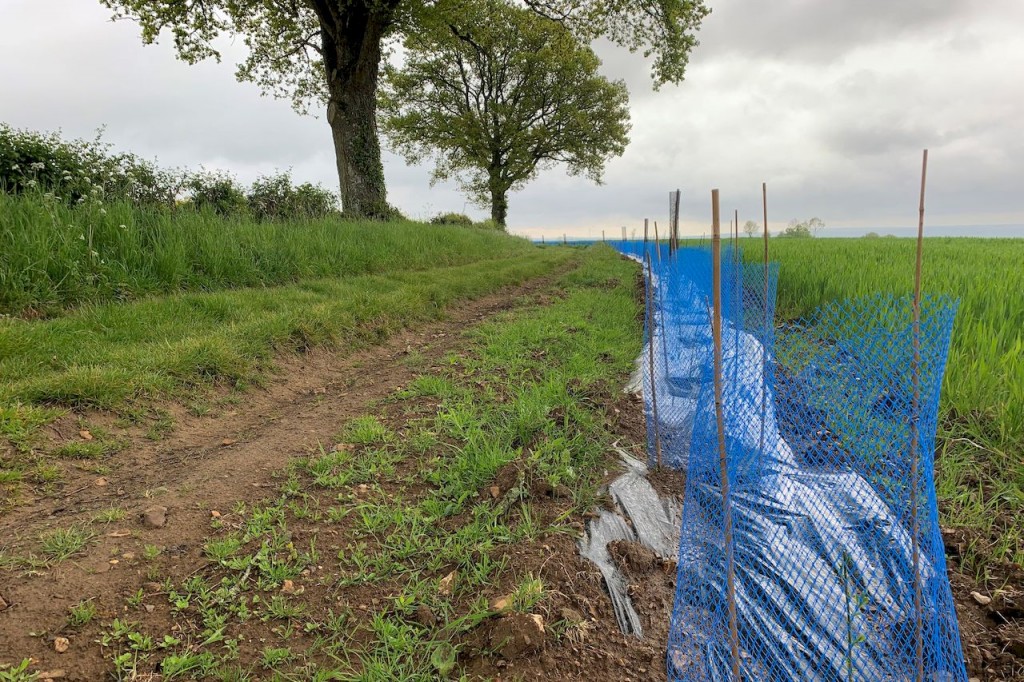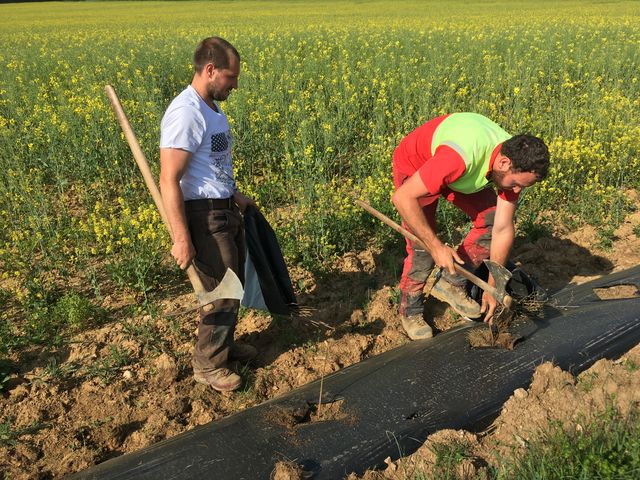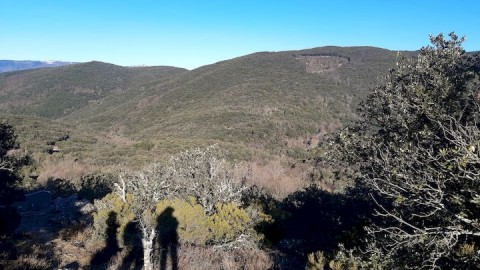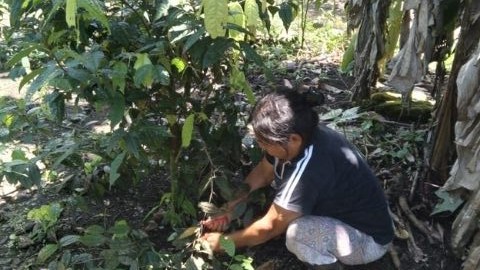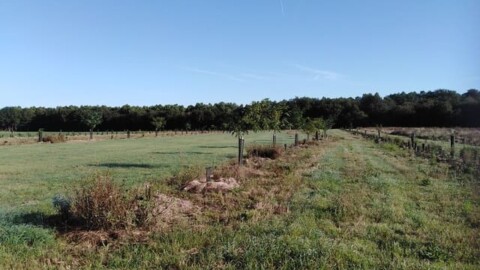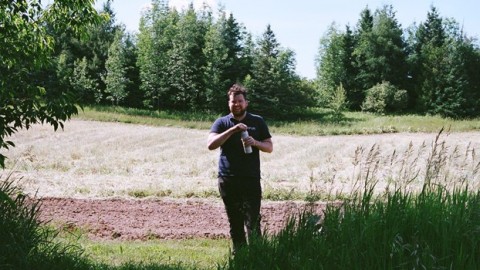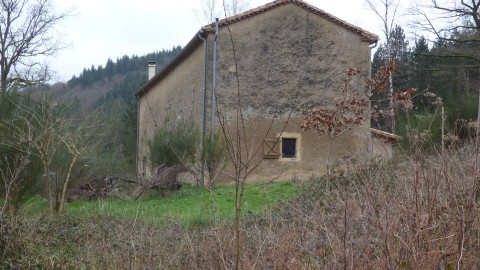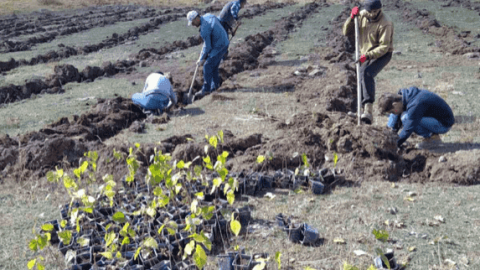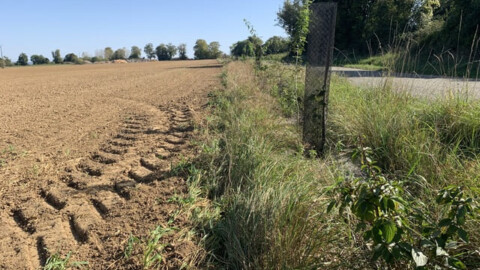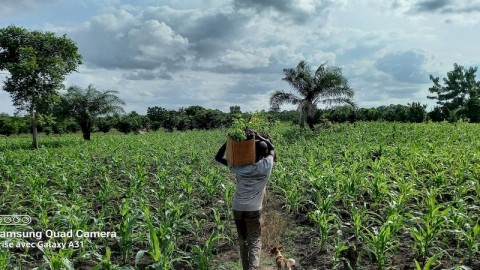
Normandy, France, May 2023
This project, in the region of Normandy, is specifically aimed at planting hedgerows together with local farmers, to complete the existing hedgerow network typical of the region. Planting hedgerow trees of over 15 different species will encourage development of a rich and diverse fauna, provide shelter and food, and provide significant support for the local flora.
The project has been running since 2020 in partnership with local company Bois Négoce Energies Orne. A Tree for You donors have supported the project through several planting phases:
- 2020: 1st planting phase with 11,020 seedlings put into the ground;
- 2021: 2nd planting phase – 3,643 seedlings;
- 2022: 3rd planting phase – 10,011 seedlings;
- 2023: 4th planting phase – around 8,400 seedlings.

Here is some information on the latest planting phase, carried out this winter 2022/2023.
Work on the 4th planting phase began at the end of 2022. It involved 10 farms and one private individual in the Orne (5,900 plants) and Calvados (2,500 plants) regions. During the winter of 2022/2023, 8,400 young trees were planted. The remaining 1,600 will be planted at the end of 2023. The planting method was almost identical to that used in previous operations, i.e. decompacting then crumbling the planting lines, laying biodegradable film, planting trees and shrubs, then installing protective covers.
Regarding the species planted, a compromise was sought between effectiveness and diversity. By effectiveness, we mean good adaptability of the species, to ensure quality recovery. The most common species are hornbeam, hazelnut, field maple, blood dogwood, and myrobolan plum. Most of these occur naturally in Normandy hedges. They are said to be ‘flexible’, can grow on calcareous or acidic, dry or cool soils. In total, they account for more than 50% of the young trees planted this winter. Given the current climate, we feel it is important to plant each hedge with a solid base of species from this category.
The other species were planted in smaller quantities. Especially for hedges introduced to specific contexts. For example, basket willow, white willow, black alder, and viburnum have all been planted on damp hydromorphic, soils, i.e. such as the banks of watercourses.
On the other hand, male dogwood, laburnum, glossy buckthorn, chokecherry, and chestnut have been planted on dry sandy soils.
Several species have been selected on an experimental basis. These include the wild apple and common pear trees. We will be monitoring their development as the hedge develops.

The big change has been in terms of protection against wildlife. As a reminder, the first planting operations included full protection of the plants: 1.2-metre sheathing (roe deer) for the high trees and 0.5-metre sheathing (rabbit) for the shrubs and intermediates.
Although effective against rabbits and hares, the 0.5m sheath is ineffective against roe deer, which are happy to rip them out and graze over them. Extending the 1.2m protection for all the plants, would be too expensive and, above all, inconsistent, since it would prevent proper width development of the shrubs and intermediate plants.
So, in 2022, the local team decided not to systematically introduce rabbit protection sheaths around the young plants. This decision also avoid the waste generated by this protection. However, this new approach has not solved the problem of pressure from roe deer, which are omnipresent in the Normandy countryside!
After extensive research, a new organic repellent made from dried pig’s blood was discovered and tested. Effective against roe deer, rabbits, and hares, applying this product to young plants has proved a success. So, it was applied to all the plants as soon as they were planted.
With regards the issue with the initial protection equipment, installed three years ago, a campaign to remove and dispose of them in landfill was carried out on several linear sites where the farmers had not yet got rid of them.
In parallel, a campaign ran to replant the hedges planted at the beginning of 2022, as well as some lines planted during previous winters that had suffered from pressure from wildlife. A total of 860 plants were replanted and subsequently protected with repellent.
The next work will be carried out during the summer of 2023. Undergrowth will be cleared on both sides of the plantations, and more repellent applied – it should last around six months.is estimated at around 6 months. Finally, as is the case every year, estimates will be drawn up at the end of the summer for planning the next replanting operations.
Text written by Luc Bertrand, from Bois Négoce Energie
On the previous planting waves



